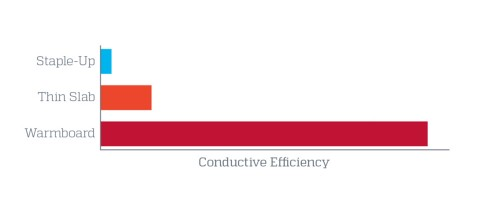Imagine stepping into a sun-drenched room, the warmth radiating from the floor beneath your feet even as the golden light fades through the window. This feeling of cozy comfort, lingering long after the sun has set, is the magic of thermal mass in action. The term “thermal mass” is often used when discussing radiant heat.
In the 1960s and 70s, passive solar homes embraced “thermal mass” to make the most of the sun’s warmth. Dark concrete floors absorbed heat through south-facing windows during the day, then slowly released it at night, stretching the sun’s heating effect by roughly 12 hours. This clever delay perfectly matched the peak sunshine with the peak need for heat.
Because passive solar could rarely supply all of a home’s heat, the concrete slabs often had tubing embedded into them so the hot water could heat the slab when there was insufficient stored heat from the sun. The popularity of this hybrid solution evolved, and soon the terms “thermal mass” and “radiant heat” became synonymous.![]()
But the same thermal mass that is so essential to a passive solar home is actually the main cause of complaints against radiant heat — it’s too slow. In any home, the heating requirements can change rapidly making it impossible for high mass systems to respond quickly.
It’s common for owners of homes heated with high mass radiant to be too cold in the morning and too hot in the afternoon. Or, if returning to a home after an extended absence, they may have to wait a day or more for their home to reach a comfortable temperature.
While the history of passive solar with radiant heat is interesting, given a blank sheet of paper, no one would design a radiant system to be a heat storage device. The job of a radiant system to deliver heat, not to store it. Because the quantity of heat that must be supplied by a radiant panel is constantly changing, the ideal radiant system is able to adjust its heat output up or down, in real time, creating a constant and consistent temperature environment.
Paradoxically, radiant heat systems and their advantages are often associated with high-mass, slab systems. However, the fact that this type of system does not vary much in output is precisely its Achilles heel. In high-mass systems, the conditioned space temperature is uneven and inconsistent, causing highs, lows, and discomfort. On the other hand, highly conductive, low mass, radiant floor systems provide more comfort with consistent temperatures.
Remember — conductivity, not mass, is king!